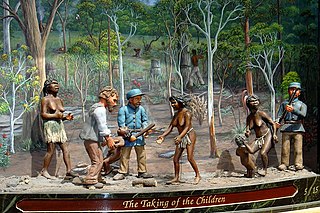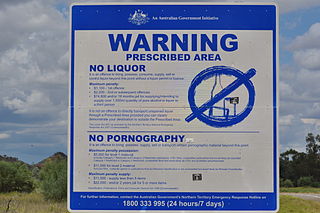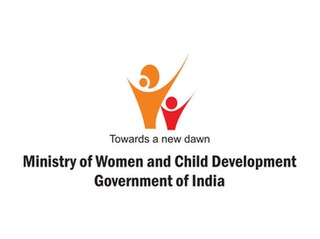External links
- http://www.dcp.wa.gov.au/Pages/Home.aspx Archived 3 April 2012 at the Wayback Machine - the Departments main website
| Agency overview | |
|---|---|
| Formed | 1 July 2007 |
| Preceding agencies | |
| Dissolved | 1 July 2017 |
| Superseding agency | |
| Jurisdiction | Government of Western Australia |
| Website | www.dcp.wa.gov.au |
The Department for Child Protection was part of the Government of Western Australia.
It was created in response to a critical review of the Department of Community Development in January 2007. [1] [2] At the time of its establishment, the government also mandated reporting of child sexual abuse.
In July 2017, the department was amalgamated with the Department of Housing, the Department of Local Government and Communities and the Disability Services Commission to form the Department of Communities. [3]
The Department administers Acts and Regulations which include the following: [4]
The Children and Community Services Act 2004, came into operation on 1 March 2006, [4] the Department came into existence on 1 July 2007 [1]
The legislation that governs the Department’s three service areas:
The Department also has the capacity for information sharing where it benefits child protection [6]
(Other agencies might have had overlap in relation to Aboriginal children, but these are the main names [1] [7]

The Stolen Generations were the children of Australian Aboriginal and Torres Strait Islander descent who were removed from their families by the Australian federal and state government agencies and church missions, under acts of their respective parliaments. The removals of those referred to as "half-caste" children were conducted in the period between approximately 1905 and 1967, although in some places mixed-race children were still being taken into the 1970s.
Aboriginal Protection Board, also known as Aborigines Protection Board, Board for the Protection of Aborigines, Aborigines Welfare Board, and similar names, refers to a number of historical Australian state-run institutions with the function of regulating the lives of Aboriginal Australians. They were also responsible for administering the various half-caste acts where these existed and had a key role in the Stolen Generations. The boards had nearly ultimate control over Aboriginal people's lives.
Child, Youth and Family, was the government agency that had legal powers to intervene to protect and help children who are being abused or neglected or who have problem behaviour until it was replaced by a new Ministry for Vulnerable Children in April 2017. CYF worked with the Police and the Courts in dealing with young offenders under the youth justice system. It provided residential and care services for children in need of care and protection and for young offenders. CYF assessed people who wished to adopt children and it reported to the Family Court on adoption applications. CYF facilitated the exchange of identifying information for parties to past adoptions. The agency also funded community organisations working with children, young people and their families to support the community's role in protecting and helping children.
Child protection refers to the safeguarding of children from violence, exploitation, abuse, and neglect. It involves identifying signs of potential harm. This includes responding to allegations or suspicions of abuse, providing support and services to protect children, and holding those who have harmed them accountable.
The Australian colonies and in the nineteenth century created offices involved in dealing with indigenous people in the jurisdictions.
Child protective services (CPS) is the name of an agency in many states of the United States responsible for providing child protection, which includes responding to reports of child abuse or neglect. Some states use other names, often attempting to reflect more family-centered practices, such as department of children and family services (DCFS). CPS is also sometimes known by the name of department of social services, though these terms more often have a broader meaning.
Social security, in Australia, refers to a system of social welfare payments provided by Australian Government to eligible Australian citizens, permanent residents, and limited international visitors. These payments are almost always administered by Centrelink, a program of Services Australia. In Australia, most payments are means tested.
The history of the Aboriginal inhabitants of Western Australia has been dated as existing for 50-70 thousand years before European contact. This article only deals with documented history from non indigenous sources since European settlement in Perth.

The Northern Territory National Emergency Response, also known as "The Intervention" or the Northern Territory Intervention, and sometimes the abbreviation "NTER" was a package of measures enforced by legislation affecting Indigenous Australians in the Northern Territory (NT) of Australia, which lasted from 2007 until 2012. The measures included restrictions on the consumption of alcohol and pornography, changes to welfare payments, and changes to the delivery and management of education, employment and health services in the Territory.
This is a timeline of Aboriginal history of Western Australia.

The Ministry of Women and Child Development, a branch of the Government of India, is an apex body for formulation and administration of the rules and regulations and laws relating to women and child development in India. The current minister for the Ministry of Women and Child Development is Smriti Irani having held the portfolio since 31 May 2019.
Aboriginal child protection describes services designed specifically for protection of the children of "aboriginal" or indigenous peoples, particularly where they are a minority within a country. This may differ at international, national, legal, cultural, social, professional and program levels from general or mainstream child protection services. Fundamental human rights are a source of many of the differences. Aboriginal child protection may be an integral or a distinct aspect of mainstream services or it may be exercised formally or informally by an aboriginal people itself. There has been controversy about systemic genocide in child protection systems enforced with aboriginal children in post-colonial societies.
In Australia, domestic violence (DV) is defined by the Family Law Act 1975. Each state and territory also has its own legislation, some of which broadens the scope of that definition, and terminology varies. It has been identified as a major health and welfare issue. Family violence occurs across all ages and demographic groups, but mostly affects women and children, and at particular risk are three groups: Indigenous, young and pregnant women.
Adoption in Australia deals with the adoption process in the various parts of Australia, whereby a person assumes or acquires the permanent, legal status of parenthood in relation to a child under the age of 18 in place of the child's birth or biological parents. Australia classifies adoptions as local adoptions, and intercountry adoptions. Known child adoptions are a form of local adoptions.
The Department of Justice is the current Western Australian government department responsible for the provision of high quality and accessible justice, legal, registry, guardianship and trustee services to meet the needs of the community and the Western Australian Government.
Law in Australia with regard to children is often based on what is considered to be in the best interest of the child. The traditional and often used assumption is that children need both a mother and a father, which plays an important role in divorce and custodial proceedings, and has carried over into adoption and fertility procedures. As of April 2018 all Australian states and territories allow adoption by same-sex couples.
The Department of Aboriginal Affairs (Western Australia) is the former government authority that was involved with the matters of the Aboriginal population of Western Australia between 2013 and 2017.
The Department of Water and Environmental Regulation was formed on 1 July 2017, when the Department of Environment Regulation (DER) amalgamated with the Department of Water and the Office of the Environmental Protection Authority. It is responsible for looking after the environment and the regulation of water resources in the state of Western Australia.

The Department of Communities is a department of the Government of Western Australia. The department was formed on 1 July 2017, out of the former Department of Child Protection and Family Support, Department of Local Government and Communities, Department of Housing and the Disability Services Commission.